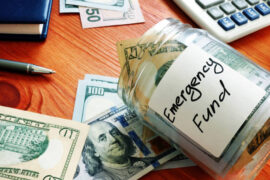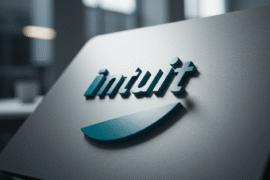This article may contain references to products or services from one or more of our advertisers or partners. We may receive compensation when you click on links to those products or services. Nonetheless, our opinions are our own.
The information presented in this article is accurate to the best of our knowledge at the time of publication. However, information is subject to change, and no guarantees are made about the continued accuracy or completeness of this content after its publication date.
The UK is currently deep in the throes of a cost of living crisis that is making day-to-day financial function extremely difficult for millions of people.
And in the age of instant gratification, people continue to purchase products and services that are currently stretching personal budgets more than normal.
This is where the genius of BNPLs, or ‘buy now pay later schemes’ comes in and the UK has a serious problem with them right now.
Let’s dive in.
The latest cost of living crisis began its life, quietly, during the pandemic.
Though years of austerity had gripped the UK, it was the covid-induced layoffs, shop closures and business impact that started to really affect people’s regular incomes and outgoings.
The UK’s BNPL sector quadrupled in value during 2020 to £2.7bn and there have been numerous calls, including from well-known money saving expert, Martin Lewis, to step in and regulate it.
Last year, the Financial Conduct Authority (FCA) told the four largest BNPL lenders: Klarna, Clearpay, Laybuy and Openpay that they needed to change terms of their contracts for users.
It is only this year, however, that a draft of new rules for BNPL lenders has started to get moving.
What’s the big deal?
So why the uptick in BNPL schemes?
They are extremely accessible to those who cannot get a credit card or who do not want to have their credit checked.
Indeed, some BNPL lenders like Klarna don’t charge any interest or late repayment fees at all on small sum purchases meaning people can effectively spend unconstrained by their actual financial position.
Retailers that host BNPL payment options on their pages can attract a more diverse range of customers that might not otherwise buy their products.
But BNPL schemes can be potentially dangerous or financially risky for a whole host of reasons.
Firstly, and most obviously, BNPL encourages consumers to make purchases they generally cannot afford at the time of purchase. This delayed payment option can encourage overspending and can frequently result in large amounts of accumulated debt.
BNPL services often target younger individuals or those with limited credit history who might not fully understand the financial implications of these schemes and if someone consistently uses BNPL to cover expenses they can’t afford, they can get caught in a cycle of debt, where they’re always paying off previous purchases with new credit.
This can be amplified by the tendency of BNPL lenders to charge extortionate interest rates if payments are made late, which they frequently are and as a result the original purchase gets higher and higher with time.
There is certainly a dopamine rush aspect to BNPL lending as the promise of repeated instant gratification can lead to overspending and people buying items they don’t actually need or can’t afford in the long run.
This, in turn, creates a reliance on credit for everyday spending creating extended financial instability.
Additionally, late or missed payments on BNPL plans can negatively impact an individual’s credit score, making it harder to access favorable credit terms in the future, such as mortgages or car loans.
And some BNPL agreements have complex terms and conditions that consumers might not fully understand, which can lead to unexpected fees, interest charges, or other surprises.
It’s important to note that not all BNPL schemes are created equal, and some providers might offer more transparent terms or lower fees.
However, as a general rule, individuals considering using BNPL should carefully read and understand the terms, assess their ability to make timely payments, and consider whether the purchase is truly necessary before opting for this payment method.
Voted "Best Overall Budgeting App" by Forbes and WSJ
Monarch Money helps you budget, track spending, set goals, and plan your financial future—all in one app.
Get 50% OFF your first year with code MONARCHVIP
Lay(buy) of the land
BNPL schemes are still, relatively speaking, in their early days and credit card markets still rule the roost.
A study from UK Finance puts the landscape into perspective, highlighting that there 35 million active credit cards in the UK which totalled a spend of £16.2bn in January 2022 alone.
A similar report from co consumer credit agency, Equifax, totalled around 15 million people using BNPL at least once in October 2021; that equates to around 28% of the adult population.
The latest news indicates that the Treasury has been spooked by sector rumblings that BNPL lenders would quit the UK market if what they deem to be ‘excessive regulation’ comes into play.
And many have proof of concept that regulation would considerably dent their profitability; Klarna’s valuation was slashed by 85% in a funding round last year to $6.7bn, partly as a result of fears about growing regulation.
And the likelihood of this regulation is rising exponentially after the Woolard Review in February 2021 concluded that BNPLs should be brought under the auspices of regulators “as a matter of urgency.”
Should the plans be kicked into the long grass so as to appease BNPL lenders, it would create uproar with the bevy of consumer action groups who have lobbied the government to restrict what they see as the dangerous power of the schemes.
In lieu of creating an entirely new set of rules for BNPL lenders to play by, one Westminster rumour is that the government will try and repurpose the Consumer Credit Act, which outlines how credit card operators can behave.
BNPL lenders have scoffed at this proposal on the grounds that the act is no longer fit for purpose to regulate their services that are, they claim, so different from that of a conventional credit supplier.
BNPLs seem to have legitimacy within the UK’s socio-economic climate. Only, it’s difficult to quantify exactly what that looks like whilst a cost of living crisis rages and people’s spending habits are more erratic than usual.
A recent survey by Citizens Advice survey found that of the 2,288 people who used BNPLs in the last 12 months, 52% made repayments from their current account, but 23% used a credit card, 9% used a bank overdraft and 7% borrowed from friends and family.
What is clear is that the government cannot allow BNPL lenders to dictate sound financial policy in fear of losing business and that also the financial security of the British public should remain the foremost consideration when considering regulation.

Reviewed and edited by Albert Fang.
See a typo or want to suggest an edit/revision to the content? Use the contact us form to provide feedback.
At FangWallet, we value editorial integrity and open collaboration in curating quality content for readers to enjoy. Much appreciated for the assist.
Did you like our article and find it insightful? We encourage sharing the article link with family and friends to benefit as well - better yet, sharing on social media. Thank you for the support! 🍉
Article Title: Uncertainty for Buy-Now Pay-Later Operators and The People That Use Them
https://fangwallet.com/2023/08/30/uncertainty-for-buy-now-pay-later-operators-and-the-people-that-use-them/The FangWallet Promise
FangWallet is an editorially independent resource - founded on breaking down challenging financial concepts for anyone to understand since 2014. While we adhere to editorial integrity, note that this post may contain references to products from our partners.
The FangWallet promise is always to have your best interest in mind and be transparent and honest about the financial picture.
Become an Insider

Subscribe to get a free daily budget planner printable to help get your money on track!
Make passive money the right way. No spam.
Editorial Disclaimer: The editorial content on this page is not provided by any of the companies mentioned. The opinions expressed here are the author's alone.
The content of this website is for informational purposes only and does not represent investment advice, or an offer or solicitation to buy or sell any security, investment, or product. Investors are encouraged to do their own due diligence, and, if necessary, consult professional advising before making any investment decisions. Investing involves a high degree of risk, and financial losses may occur including the potential loss of principal.
Source Citation References:
+ Inspo











































